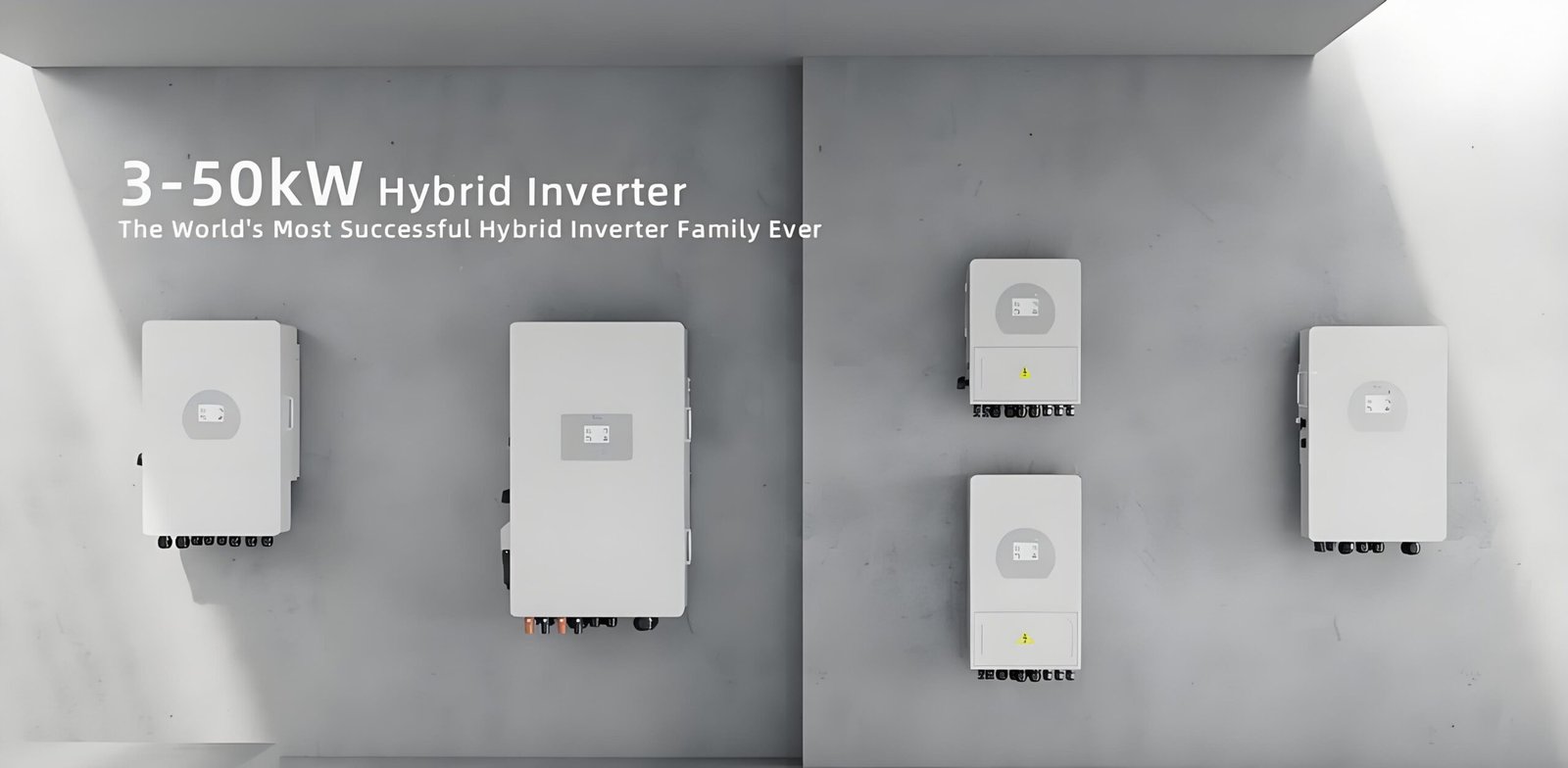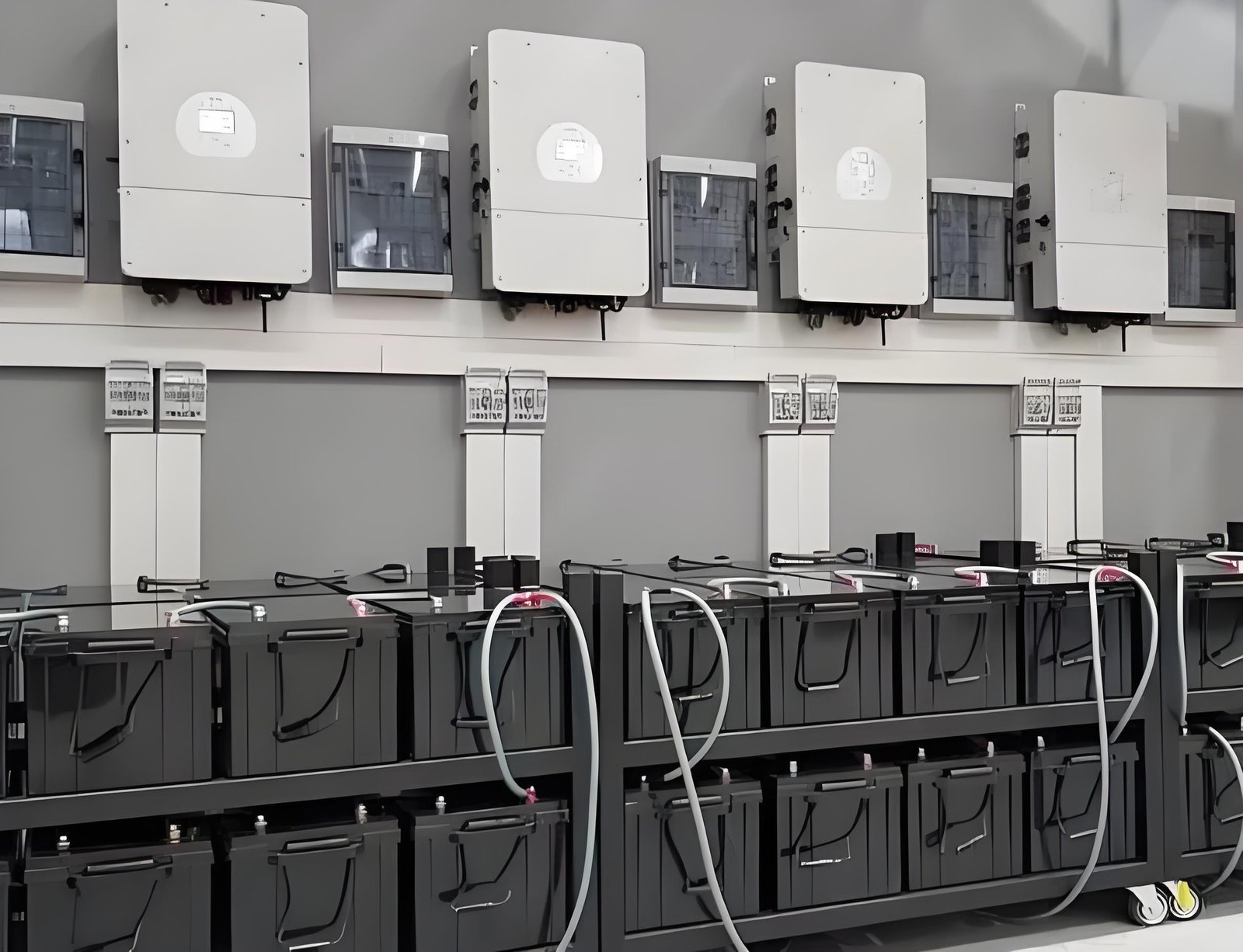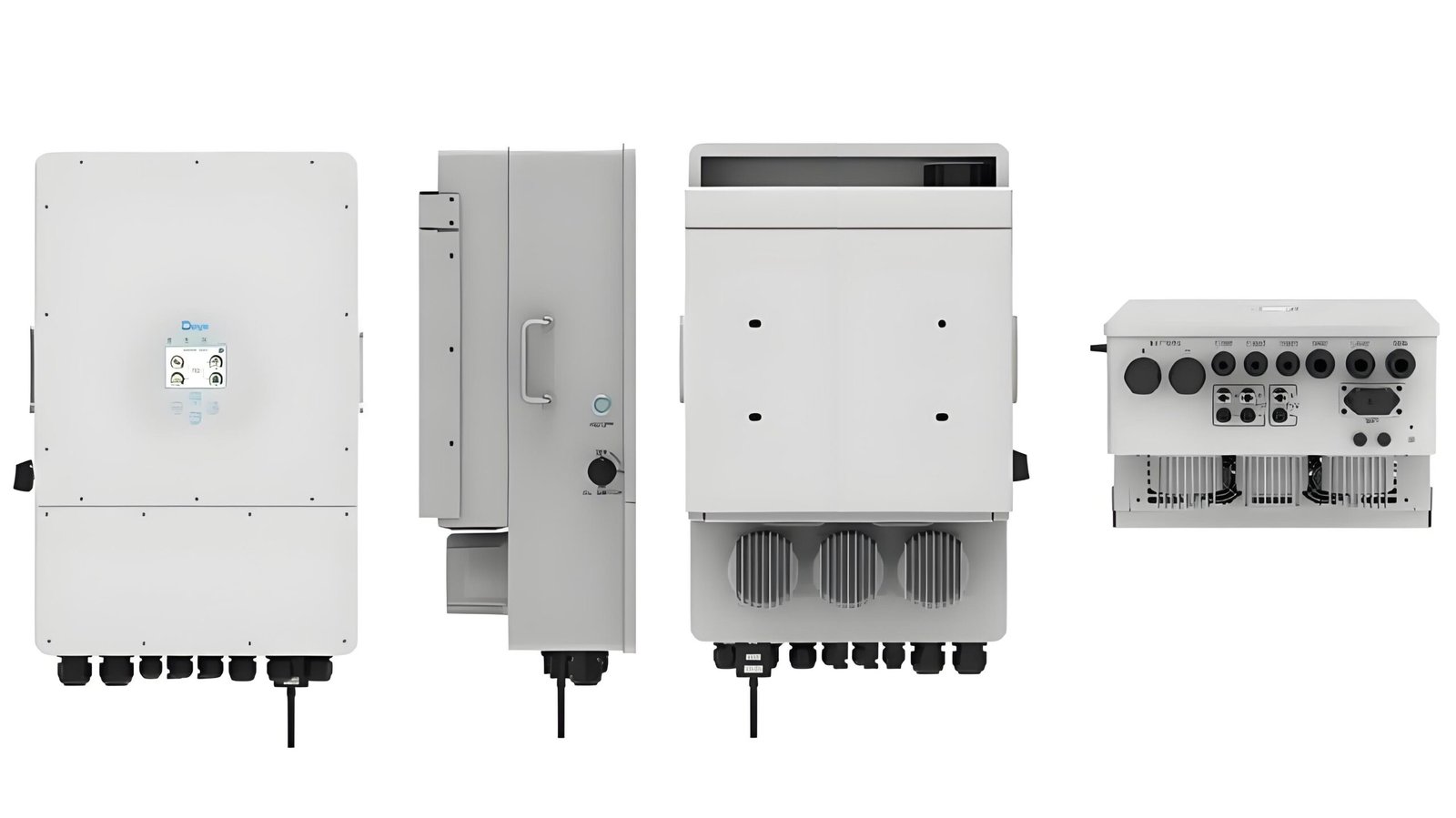The Deye Hybrid Inverter SUN-7.6/8K-SG01LP1-EU is a high-performance, feature-rich solution for managing solar energy systems. Designed to handle on-grid, off-grid, and hybrid power setups, it offers seamless integration of solar, grid, and battery power sources for residential and small commercial applications.
Comprehensive Product Overview
This hybrid inverter combines inverter, solar charger, and battery charger functions to deliver uninterrupted power while optimizing energy efficiency. Its advanced features are designed to simplify solar energy management.
Key Features:
- Multiple operation modes: Supports on-grid, off-grid, and UPS1 (uninterruptible power supply) modes.
- Dual MPPT trackers: Maximizes energy harvest even under varying sunlight conditions. Learn about MPPT2 and its importance in solar energy optimization.
- Advanced battery compatibility: Works with both lithium and lead-acid batteries.
- Smart load and time-of-use features: Enables prioritization of solar, battery, or grid power.
- Wi-Fi and monitoring: Supports remote monitoring and real-time system management.
- Comprehensive protection: Built-in safeguards against overload, short circuits, and temperature surges.
Technical Specifications:
| Specification | SUN-7.6K-SG01LP1-EU | SUN-8K-SG01LP1-EU |
|---|---|---|
| Rated Output Power | 7.6 kW | 8.0 kW |
| MPPT Voltage Range | 150V–480V | 150V–480V |
| Maximum PV Voltage | 550V | 550V |
| Battery Voltage | 48V | 48V |
| Efficiency | Up to 98% | Up to 98% |
| Number of MPPTs | 2 | 2 |
Installation and Space Requirements
Proper installation ensures optimal performance and durability for the inverter.

Installation Environment:
- Placement: Install on a vertical, load-bearing wall in a location free of direct sunlight, rain, and excessive dust.
- Ventilation: Maintain at least 50 cm clearance on all sides for proper airflow.
- Operating Temperature: -40°C to 60°C for consistent performance.
- Ingress Protection: IP65-rated3 for outdoor use.
Mounting Instructions:
- Drill four mounting holes using the provided template and recommended drill size.
- Install the mounting bracket with expansion bolts.
- Carefully hang the inverter on the bracket and secure it with screws.
Battery and Grid Connection Guidelines
The Deye Hybrid Inverter supports seamless integration with battery storage and grid systems, ensuring efficient and safe operation.

Battery Connection:
- Use appropriately sized cables and connectors for the battery terminals.
- Ensure correct polarity4 (positive to positive, negative to negative).
- Tighten connectors to the recommended torque value5 (24.5 Nm for 7.6/8kW models).
Recommended Cable Sizes:
| Model | Cable Size (mm²) | Torque Value (Nm) |
|---|---|---|
| 7.6kW | 70 | 24.5 |
| 8.0kW | 70 | 24.5 |
Grid and Backup Load Connection:
- Install a 63A circuit breaker for both grid and load connections.
- Ensure the grid, load, and generator connections follow the correct polarity and wiring standards.
Solar PV Integration and MPPT Optimization
This inverter’s dual MPPT technology ensures efficient solar energy harvesting.
PV Module Requirements:
- Open Circuit Voltage (Voc): Must not exceed 550V. Learn about Voc6 and its importance in solar systems.
- MPPT Voltage Range: 150V–480V for optimal performance. Understanding the MPPT voltage range is key to maximizing energy harvesting.
- Number of Strings per MPPT Tracker: 2.
PV Module Connection:
- Turn off the DC isolator switch before connecting the solar modules.
- Connect the PV strings to the inverter’s DC terminals, ensuring correct polarity.
- Secure the connections using approved connectors to prevent damage.
Operational Modes and Monitoring
The Deye Hybrid Inverter offers flexible operational modes to adapt to various energy management needs.

Operating Modes:
- On-Grid Mode: Prioritizes solar energy and exports surplus to the grid.
- Off-Grid Mode: Powers loads independently using battery and solar energy. Learn about On-Grid and Off-Grid7 solar systems and how they differ.
- UPS Mode: Ensures uninterrupted power during outages by switching to battery backup. Read more about UPS systems and their role in power reliability.
Monitoring and Connectivity:
- LCD Display: Displays real-time system status, including power flow and battery status.
- Wi-Fi Monitoring: Connects to the Deye app for remote system management and monitoring.
Maintenance and Troubleshooting
Routine maintenance ensures the inverter operates efficiently over its lifespan.
Maintenance Tips:
- Inspect Monthly: Check for loose connections and clean air vents.
- Firmware Updates: Regularly update the inverter’s software to the latest version. Learn why firmware updates8 are important for keeping your inverter functioning efficiently.
- Cooling System: Ensure the unit’s ventilation is free of obstructions. Read about maintaining the cooling system9 to prevent overheating and ensure optimal performance.
Troubleshooting Common Issues:
| Issue | Possible Cause | Solution |
|---|---|---|
| Inverter not starting | Improper wiring | Verify connections and wiring |
| Low energy efficiency | Dirty solar panels | Clean panels and check settings |
| Error Code: E01 | Overload detected | Reduce load and restart inverter |
Conclusion
The Deye Hybrid Inverter SUN-7.6/8K-SG01LP1-EU is a robust, efficient solution for managing solar energy systems. Its advanced features, flexible operation modes, and ease of use make it ideal for both residential and commercial applications.
Footnotes:
-
This link will explain UPS systems and how they provide backup power during outages, which is a key feature of the inverter. ↩
-
This link will explain Maximum Power Point Tracking (MPPT), a crucial feature for optimizing solar energy output. It will help readers understand how MPPT works in conjunction with solar inverters. ↩
-
IP65 rating means the inverter is dust-tight and can withstand water jets from any direction, making it suitable for outdoor environments. ↩
-
Correct polarity ensures that the positive and negative terminals are properly connected, which is essential for safety and efficient operation. ↩
-
Using the correct torque value for electrical connections ensures a secure and reliable connection, preventing overheating or damage to the components. ↩
-
Open Circuit Voltage (Voc) refers to the maximum voltage a solar panel can produce when it is not connected to a load. Exceeding this voltage can damage the inverter. ↩
-
On-grid systems are connected to the utility grid, allowing energy exchange, while off-grid systems operate independently, using stored battery power and solar energy. ↩
-
Firmware updates are essential to ensure the inverter has the latest features, bug fixes, and security patches, enhancing overall performance and reliability. ↩
-
Regularly cleaning and maintaining the inverter's cooling system helps prevent overheating, ensuring the inverter runs smoothly and lasts longer. ↩




